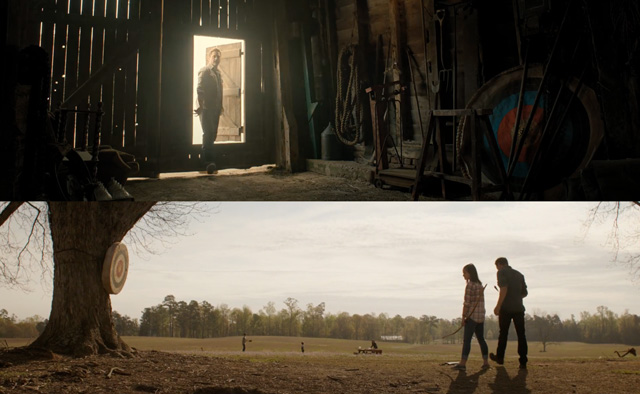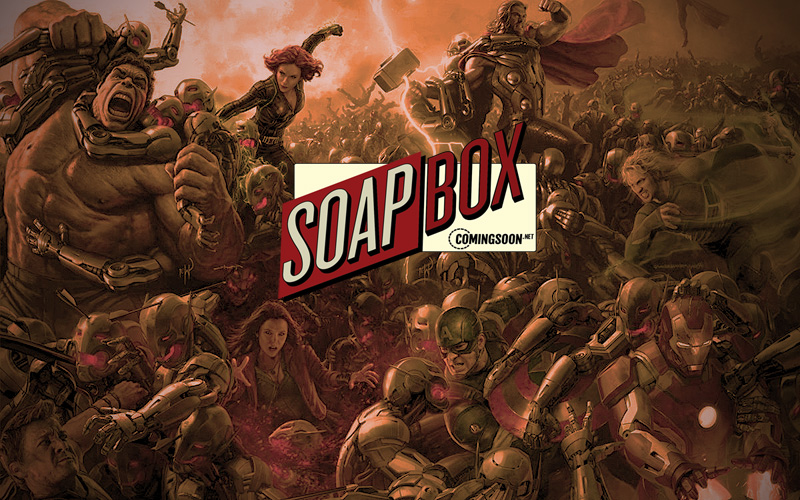On May 1, 2015 Marvel Studios unleashed Avengers: Age of Ultron, the sequel to their mammoth 2012 blockbuster Marvel’s The Avengers and a culmination of their Phase 2 film slate. Led by returning sextet Robert Downey Jr., Chris Hemsworth, Mark Ruffalo, Chris Evans, Scarlett Johansson & Jeremy Renner, and helmed by returning writer/director Joss Whedon, the project had a budget projected above $300 million (although some reports put it in the neighborhood of $450 million). Expectations were off-the-charts, and though the Marvel Cinematic Universe installment was fairly well-reviewed (76% on Rotten Tomatoes) and performed spectacularly at the box office ($1.4 billion worldwide) it has been perceived at best as a fun disappointment and at worst the black sheep of the Avengers movies.
Click here to purchase Avengers: Age of Ultron!
RELATED: WandaVision Episodes 1 & 2: Clues, Predictions & Takeaways
Even the film’s director expressed a sense of regret at the resulting film, which even at an already overstuffed 141 minutes was subject to much editing, including the elimination of Tom Hiddleston’s Loki, trimming a good deal of Thor material and the scuttling of planned appearances by Spider-Man and Captain Marvel.
“I sort of created a narrative wherein I had not quite accomplished it, and I think that did a disservice to the movie and to the studio and to myself,” Whedon said. “The fact that Marvel gave me that opportunity twice is so bonkers… and the fact that I came off of it feeling like a miserable failure is also bonkers, but not in a cute way.”
Despite the tug of war between Marvel and Whedon during production, and the subdued fan response to the final product, Avengers: Age of Ultron has generated an embarrassment of riches for the MCU in the ensuing years. So many of the threads created in the film paid off in future films in both small and large ways, with the ripple effect extending to the inaugural MCU series WandaVision debuting on Disney+ this week. In the first three episodes alone (which ComingSoon.net was privy to prior to broadcast) there are many nods to the events of Age of Ultron, not to mention the fact that the two title characters made their formal debut in the 2015 film.*
*Yes, Wanda (Elizabeth Olsen) technically appeared for a few seconds in an end credits tag directed by Whedon for Captain America: The Winter Soldier, and Paul Bettany’s A.I. J.A.R.V.I.S. had been in the movies since Iron Man (2008).

RELATED: CS Video: WandaVision Interview With Director Matt Shakman
The sheer number of important story points and characters introduced in Age of Ultron arguably surpasses any other single film in producer Kevin Feige’s intricately planned 23-movie Infinity Saga and beyond, and the evidence is overwhelming to suggest that it may in fact be the most important film in the MCU. Here are the biggest pieces of said evidence…
-Wanda Maximoff/Scarlet Witch formally introduced, one of the most powerful beings in the MCU
-Vision created/introduced as an amalgam of J.A.R.V.I.S., Ultron, Tony Stark, Bruce Banner and the Mind Stone
-First hints of WandaVision romance, in full bloom by Infinity War and later explored in the Disney+ series
-Baron Wolfgang von Strucker formally introduced, whose presence (along with HYDRA) may be important to WandaVision in his “creation” of Scarlet Witch and Quicksilver
-Scarlet Witch, Vision, Falcon and War Machine become official Avengers, with Captain America and Black Widow retained
-First direct mention of Wakanda and Vibranium
-Ulysses Klaue (Black Panther villain) introduced
-First direct look at the Black Widow training program, hugely important to the forthcoming Black Widow film
-Introduction of romance between Banner and Natasha, important to the undercurrent of both Thor: Ragnarok and Avengers: Endgame
-First appearance of Veronica, the “Hulkbuster” armor later used by Banner in Infinity War
-Hulk escapes in Quinjet to space as prelude to Thor: Ragnarok, including a video of Natasha seen in that film
-First hints by Heimdall of Asgard’s forthcoming Ragnarok event
-First hints of Nick Fury’s post- S.H.I.E.L.D. organization S.W.O.R.D., later glimpsed at the end of Spider-Man: Far From Home
-Tony Stark’s artificial intelligence F.R.I.D.A.Y. introduced, later heard in Civil War, Spider-Man: Homecoming, Infinity War and Endgame
-The ideological divide between Tony Stark and Steve Rogers deepens, laying further groundwork for Civil War
-First inklings of the thread of Captain America’s longing for “home” and to be back with Peggy, ultimately paid off in Endgame
-The first hint that Captain America can wield Mjölnir, as seen in Endgame
-Introduction of Laura Barton and Hawkeye’s family, hugely important in Endgame and presumably forthcoming Hawkeye series
-The destruction and mayhem unleashed on Sokovia was critical in the formation of the Sokovia Accords pivotal in Civil War, and was also mentioned in Ant-Man
-New Avengers HQ in upstate New York introduced, a crucial location for Ant-Man, Captain America: Civil War and Avengers: Endgame
-First direct explanation of “intricate game” Thanos has been playing to get the Infinity Stones
-Thanos gets his Infinity Gauntlet in post-credits scene
RELATED: CS Video: Kathryn Hahn Talks Joining The MCU With WandaVision
There are also many thematic elements in Age of Ultron that are later carried over in future films, including Tony’s desire to create a suit of armor around the world to protect earth from cosmic threats, later mentioned regretfully in Endgame. Cap’s secret longing for the normal life he was finally able to achieve in Endgame is first exposed via his Wanda-induced WWII hallucination sequence with Peggy and later in the shot (borrowed from John Ford’s The Searchers) where he look’s longingly through the doorway to Clint’s family house, then turns his back on it. The much-maligned/misunderstood thread about Natasha’s Red Room hysterectomy (labeling herself a “monster” because she took away her ability to have children to be a more efficient killer) later factors into her decision in Endgame to sacrifice herself so Clint could be with his own family.
Some threads paid off less, as when Tony’s decision to “retire” and stop being Iron Man proved to be more than he could promise, leading to his breakup with Pepper mentioned in Civil War. Clint’s retirement was similarly short-lived, getting back in action in Civil War. Thor’s mission at the end of the Age of Ultron to find the other Infinity Stones was written off as a joke at the beginning of Thor: Ragnarok, stating he “didn’t find any.” Likewise, Bruce’s relationship with Natasha seemed to peter out once he returned to Earth in Infinity War and in the 5 years between that film and Endgame, although his specific failed attempt to bring her back when he utilized the Gauntlet carried extra tragic weight.
Even tiny details wound their way into future films, like this giant archery boss (target) seen in Clint’s barn in Age of Ultron that we see again at the opening of Endgame…

Although a lot of credit can be given to mastermind Feige as well as later MCU directors like The Russo Brothers and their writing team of Christopher Markus and Stephen McFeely for being in charge of the payoff machine, Whedon deserves a lot of the credit for setting up these threads. Another thing which many do not credit Age of Ultron for is being a more complex, more visually thrilling and ultimately BETTER movie than 2012’s Avengers. While the first team-up movie is loads of fun and delivers lots of great banter, it has a generic look and fairly simplistic story. Age of Ultron takes more risks in that it leans into Tony Stark as near-villain, the Avengers themselves perceived as evil/fascistic by foreign countries (and Ultron himself), and the fact that every major character in the large ensemble has a strong arc, something rarely achieved in modern blockbusters. All the while it takes the piss out of films like then-recent Man of Steel for seemingly not caring about civilian casualties. At every turn in Whedon’s film the heroes do everything in their power to protect the sanctity of life, and that’s part of the point.
As Steve Rogers says, “Ultron thinks we’re monsters, that we’re what’s wrong with the world. This isn’t just about beating him, it’s about whether he’s right.”
For the continued ripple effect Avengers: Age of Ultron will have on the future of Marvel, one need only look to the WandaVision series, and the word that it will lead into Sam Raimi’s Doctor Strange in the Multiverse of Madness. Wanda’s powers may not only crack open the multiverse (the potential of which could see new actors playing old heroes, as well as past iterations like Tobey Maguire’s Spider-Man), but there has been a longstanding rumor that she could be responsible for ushering the mutant era of X-Men into the MCU.
Whatever may spring from the film in the future, it stands as one of the shining moments in the history of the MCU, deserving of reappraisal.
NOTE: This article is not meant to condone, defend or justify any of the current/past accusations against writer/director Joss Whedon. As with every other Marvel Studios film, Age of Ultron was a project with many creative voices in front of and behind the camera, and this is merely an examination of the film itself and not any one creator.










